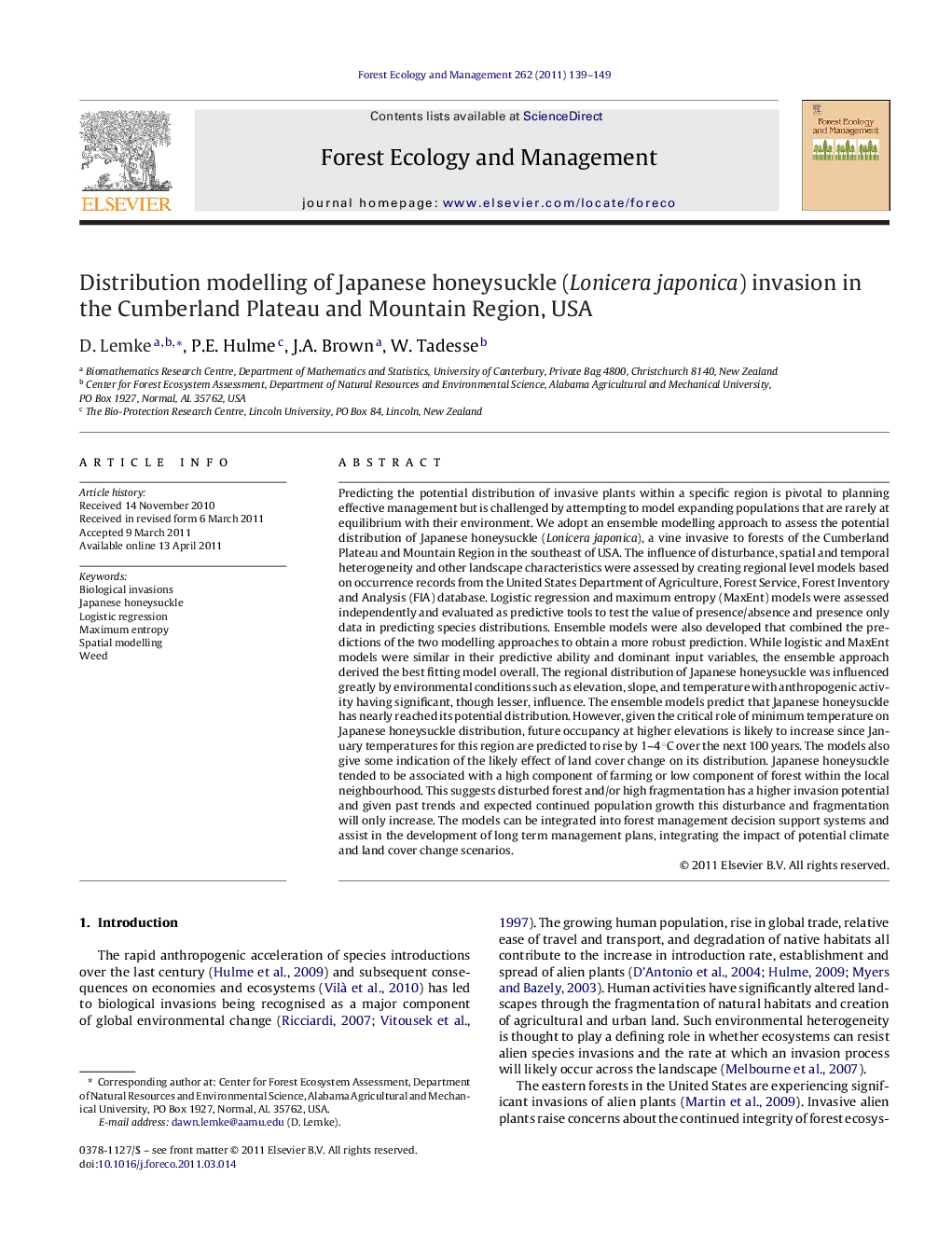| Article ID | Journal | Published Year | Pages | File Type |
|---|---|---|---|---|
| 87953 | Forest Ecology and Management | 2011 | 11 Pages |
Predicting the potential distribution of invasive plants within a specific region is pivotal to planning effective management but is challenged by attempting to model expanding populations that are rarely at equilibrium with their environment. We adopt an ensemble modelling approach to assess the potential distribution of Japanese honeysuckle (Lonicera japonica), a vine invasive to forests of the Cumberland Plateau and Mountain Region in the southeast of USA. The influence of disturbance, spatial and temporal heterogeneity and other landscape characteristics were assessed by creating regional level models based on occurrence records from the United States Department of Agriculture, Forest Service, Forest Inventory and Analysis (FIA) database. Logistic regression and maximum entropy (MaxEnt) models were assessed independently and evaluated as predictive tools to test the value of presence/absence and presence only data in predicting species distributions. Ensemble models were also developed that combined the predictions of the two modelling approaches to obtain a more robust prediction. While logistic and MaxEnt models were similar in their predictive ability and dominant input variables, the ensemble approach derived the best fitting model overall. The regional distribution of Japanese honeysuckle was influenced greatly by environmental conditions such as elevation, slope, and temperature with anthropogenic activity having significant, though lesser, influence. The ensemble models predict that Japanese honeysuckle has nearly reached its potential distribution. However, given the critical role of minimum temperature on Japanese honeysuckle distribution, future occupancy at higher elevations is likely to increase since January temperatures for this region are predicted to rise by 1–4 °C over the next 100 years. The models also give some indication of the likely effect of land cover change on its distribution. Japanese honeysuckle tended to be associated with a high component of farming or low component of forest within the local neighbourhood. This suggests disturbed forest and/or high fragmentation has a higher invasion potential and given past trends and expected continued population growth this disturbance and fragmentation will only increase. The models can be integrated into forest management decision support systems and assist in the development of long term management plans, integrating the impact of potential climate and land cover change scenarios.
► We examine factors responsible for Japanese honeysuckle distributions in the CPMR. ► Identified the areas most vulnerable to invasion. ► Modelling techniques were assessed for value, both ecologically and statistically. ► 1907 survey locations estimated the distribution for over 40,000 km2.
